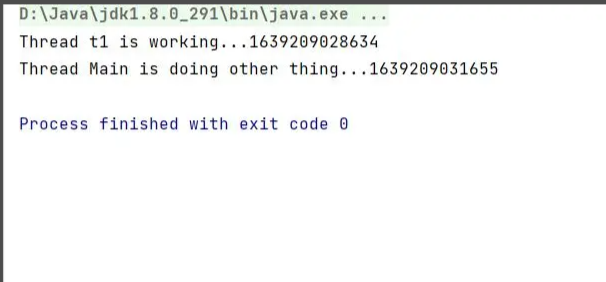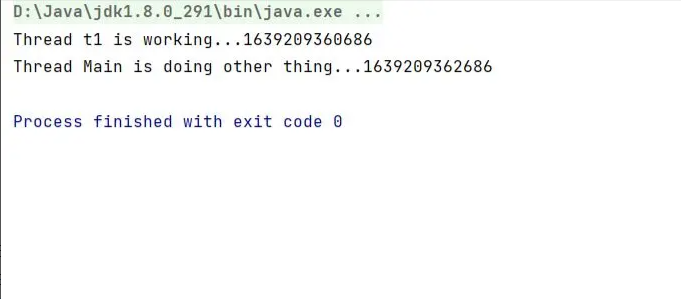本篇内容介绍了“Java线程启动怎么用start()”的有关知识,在实际案例的操作过程中,不少人都会遇到这样的困境,接下来就让小编带领大家学习一下如何处理这些情况吧!希望大家仔细阅读,能够学有所成!1、直接调用线程的run()方法publi
本篇内容介绍了“Java线程启动怎么用start()”的有关知识,在实际案例的操作过程中,不少人都会遇到这样的困境,接下来就让小编带领大家学习一下如何处理这些情况吧!希望大家仔细阅读,能够学有所成!
public class TestStart { public static void main(String[] args) throws InterruptedException { Thread t1 = new Thread(){ @Override public void run() { System.out.println("Thread t1 is working..."+System.currentTimeMillis()); try { Thread.sleep(1000); } catch (InterruptedException e) { e.printStackTrace(); } } }; t1.run(); Thread.sleep(2000); System.out.println("Thread Main is doing other thing..."+System.currentTimeMillis()); }}
可以看到主线程在t1.run()运行之后再过三秒才继续运行,也就是说,直接在主方法中调用线程的run()方法,并不会开启一个线程去执行run()方法体内的内容,而是同步执行。
public class TestStart { public static void main(String[] args) throws InterruptedException { Thread t1 = new Thread(){ @Override public void run() { System.out.println("Thread t1 is working..."+System.currentTimeMillis()); try { Thread.sleep(1000); } catch (InterruptedException e) { e.printStackTrace(); } } }; t1.start(); Thread.sleep(2000); System.out.println("Thread Main is doing other thing..."+System.currentTimeMillis()); }}
startVSrun1.JPG 可以看到在,在执行完t1.start()这一行之后,主线程立马继续往下执行,休眠2s后输出内容。 也就是说,t1线程和主线程是异步执行的,主线程在线程t1的start()方法执行完成后继续执行后面的内容,无需等待run()方法体的内容执行完成。
“Java线程启动怎么用start()”的内容就介绍到这里了,感谢大家的阅读。如果想了解更多行业相关的知识可以关注编程网网站,小编将为大家输出更多高质量的实用文章!
--结束END--
本文标题: Java线程启动怎么用start()
本文链接: https://lsjlt.com/news/306368.html(转载时请注明来源链接)
有问题或投稿请发送至: 邮箱/279061341@qq.com QQ/279061341
2024-05-24
2024-05-24
2024-05-24
2024-05-24
2024-05-24
2024-05-24
2024-05-24
2024-05-24
2024-05-24
2024-05-24
回答
回答
回答
回答
回答
回答
回答
回答
回答
回答
0